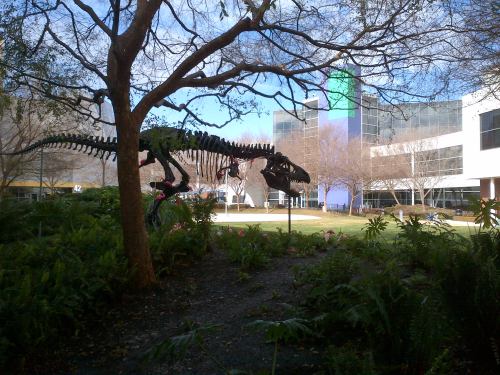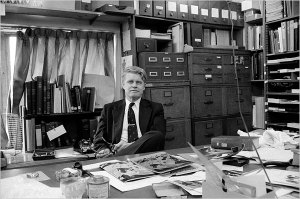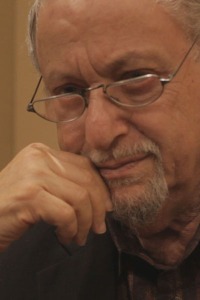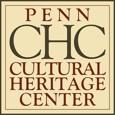In the early 1980s, the antiquities department at the J. Paul Getty Museum was a hotbed of whispered political intrigue.
Rumors swirled that the department’s Czech curator, Jiri Frel, was a Communist spy. And many believed the deputy curator, former State Department official Arthur Houghton, was a CIA plant tasked with keeping an eye on Frel’s activities.
 Frel’s once-classified FBI file, obtained by the authors under the Freedom of Information Act, reveals that the US Government asked similar questions about Frel in 1971, when an investigation was conducted into his “possible intelligence connections.”
Frel’s once-classified FBI file, obtained by the authors under the Freedom of Information Act, reveals that the US Government asked similar questions about Frel in 1971, when an investigation was conducted into his “possible intelligence connections.”
As part of our Hot Documents series, we’ve posted the entire FBI file here.
Frel was born in Czechoslovakia 1923 as Jiri Frohlich to a Czech father and Austrian mother, the FBI records show. (The family changed the surname to Frel in 1940s, possibly to hide Jewish roots.) Frel entered the United States in 1969 as a visiting scholar at Princeton University’s Institute for Advanced Studies. The Institute had long been an intellectual home base for leading scholars, including Albert Einstein.
After a year at the Institute, Frel was granted political asylum with the help of lawyers at the Metropolitan Museum of Art, where he had begun working as an research associate in the Greek and Roman Department under Dietrich von Bothmer. Interestingly, Frel cites additional assistance from George Kennan, the former US Ambassador to the Soviet Union and a leading historian at the IAS.
During an interview with FBI agents in September 1971, Frel was “extremely cooperative,” the records show. Frel denied ever being a spy but he admitted to providing Communist government officials with the names, background information and psychological assessments of those he met on his scholarly travels throughout Europe during the Cold War. “He stated that while he was never aware of this information being used for intelligence purposes, he often suspected that the Chechoslovak [sic] Intelligence Service reviewed copies of this form,” the report notes.
The FBI seemed particularly interested in Frel’s ties to his mentor at Charles University, a woman whose name is redacted in the FBI file. We shared the FBI file with an expert on academic life under Communist Prague, UC Berkeley Associate Professor John Connelly, who was able to identify the woman as Ruzena Vackova, a professor of classical architecture in Prague who was condemned to 22 yrs. prison in 1952.
 According to Connelly, Vackova was one of the few in academia to speak openly against the Communist regime and was the only professor in Prague to march with student protesters. In Connelly’s book “Captive University,” he describes Vackova telling a group in March 1948, “…if a criteria for dismissing these students was participation in these demonstrations, then I would like to share their fate.” (p.194) Vackova spent 16 years in prison and her dissent continued after her release, Connelly told us in an email.
According to Connelly, Vackova was one of the few in academia to speak openly against the Communist regime and was the only professor in Prague to march with student protesters. In Connelly’s book “Captive University,” he describes Vackova telling a group in March 1948, “…if a criteria for dismissing these students was participation in these demonstrations, then I would like to share their fate.” (p.194) Vackova spent 16 years in prison and her dissent continued after her release, Connelly told us in an email.
“She was an extraordinary, outstanding person,” he said.
The FBI had picked up on whispers that Frel may have been a Communist agent who turned Vackova in to the authorities. “Since he was one of her protégés at Charles University in Prague, a rumor began to spread of which he was aware, that he had somehow cooperated with the Communist government in her demise,” the report notes.
Frel denied the claim and railed against the Soviet overlords in his Czech homeland, saying he “vehemently disagrees with the Communist regime.” Yet the curator also volunteered (we imagine somewhat sheepishly, but the bland FBI prose doesn’t say) how he cultivated the regime’s approval by once applying for the Communist party. Frel said he applied “to keep his position at the university,” and was rejected because of his incompatible political views.
Connelly believes that it is unlikely that Frel had any role in Vackova’s arrest. “He was probably a conformist (like the overwhelming majority) who tried to anticipate the will of the regime,” Connelly wrote to us. Few who knew him at the Getty would think of Frel as a conformist, but during his years there he certainly showed a flare for telling those in power what they wanted to hear while doing what he damn well pleased.
Espionage allegations aside, the Frel file is a fascinating study of a complicated personality. It hints at Frel’s famously chaotic love life. More importantly, it demonstrates how adept the charismatic polymath, connoisseur and political shape-shifter was at manipulating situations and spinning answers for his own survival. Colleagues at the Getty knew Frel as an Old World snob who constantly complained about America, its broken education system, its obsession with pop culture, its hot dogs and unpalatable mustard. Indeed, years later, when he was caught conducting a massive tax fraud scheme and falsifying provenance for million-dollar fakes at the Getty, Frel left America and never looked back. Yet during his 1971 FBI interview, the reporting agent noted how Frel gushed that “he considers the United States to be in his words ‘a great and good country.”
The story told by the documents is not complete: 10 pages were redacted, citing exemptions for national security and privacy. But it’s clear the FBI closed its case in 1971, concluding Frel had no ties to foreign intelligence services. Frel died in Paris on April 29, 2006.
As for Houghton and his ties to the CIA, the rumors were not far off. Before coming to the Getty in 1982, he had spent a decade working for the State Department, including time in its bureau of intelligence and research as a Mid East analyst. Houghton was fond of cultivating his image as a man of mystery. In truth, he had burned out on the diplomatic bureaucracy and chose a career that brought him closer to his long time passion — ancient coins. Houghton remains active in the field to this day.














 October 27: Harvard Club of NYC will be hosting us for a lecture, book signing and dinner. (Members only.)
October 27: Harvard Club of NYC will be hosting us for a lecture, book signing and dinner. (Members only.)

 October 19th: Princeton University.
October 19th: Princeton University. 
 That evening at 6pm, Penn Law and the Museum will host us for a discussion on the illicit trade with Robert Wittman, former head of the FBI’s
That evening at 6pm, Penn Law and the Museum will host us for a discussion on the illicit trade with Robert Wittman, former head of the FBI’s  October 24th: New York University.
October 24th: New York University.  November 2: Chapman University. The Department of Art and Chapman Law School will host Jason for an evening lecture and book signing. Details TBA.
November 2: Chapman University. The Department of Art and Chapman Law School will host Jason for an evening lecture and book signing. Details TBA.


